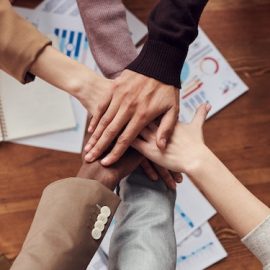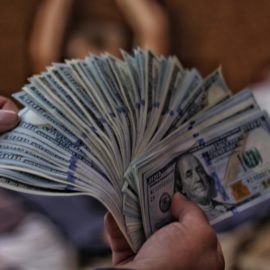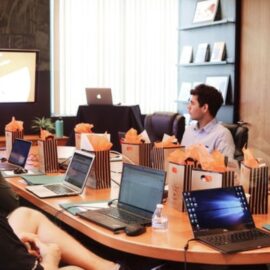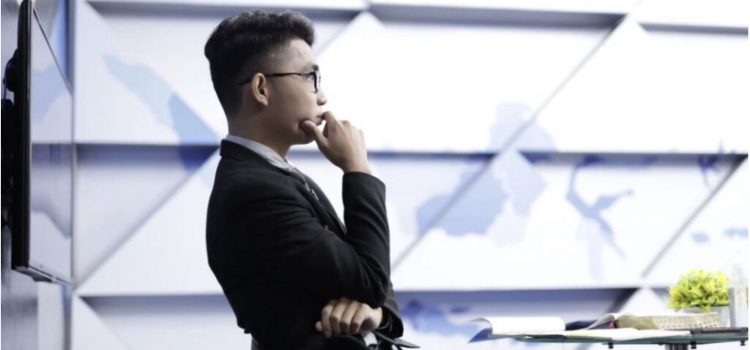
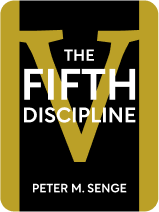
This article is an excerpt from the Shortform book guide to "The Fifth Discipline" by Peter M. Senge. Shortform has the world's best summaries and analyses of books you should be reading.
Like this article? Sign up for a free trial here.
What are “mental models” in Peter Senge’s The Fifth Discipline? What can you, as a leader, do to create a company culture where people strive to constantly grow and update their knowledge in line with new information?
Mental models are the second discipline in Peter Senge’s framework for creating a learning organization. In practice, this means improving your ability to see the big picture by constantly assessing and updating what you think you know.
Keep reading to learn about the discipline of mental models and how you can implement it in your organization.
What Are Mental Models?
According to Peter Senge, mental models are the closely held beliefs and assumptions that make up your worldview. Your worldview affects how you interpret your experiences, and it therefore constantly influences your thoughts and behavior.
Senge adds that it’s impossible to have a completely correct worldview—all worldviews are subjective and simplified versions of the truth. That’s why he calls on us to constantly examine and improve our worldviews: to make them more correct, even though they’ll never be 100% correct.
Senge adds that people often have great ideas about how to improve themselves or their organizations but fail to implement those ideas because they contradict their secretly held beliefs. For example, a store manager might have an idea for a fun event to boost employee morale and customer engagement yet never bring it up because he or she assumes that executives will reject the idea. The manager could challenge this worldview by pitching the idea anyway and seeing if his or her beliefs hold true.
| Science Is a Process of Worldview Improvement Senge’s second discipline—constantly questioning what we think we know—isn’t a new idea. In fact, it’s the same process by which science progresses. In The Structure of Scientific Revolutions, philosopher of science Thomas Kuhn explains that gaining knowledge isn’t always a linear process of adding to what we already know; sometimes, learning new things requires us to overturn long-established theories and beliefs. When scientists make observations that can’t be explained by current scientific theories, it’s a sign that they might need to reexamine the current scientific worldview. For example, when astronomers realized that the movements of stars and planets didn’t line up with their Earth-centric theory of the universe, that discovery eventually led to the current Sun-centric theory of the solar system. In much the same way, each of us should always be on the lookout for new facts or observations that don’t fit our personal worldviews—any such anomaly could be an opportunity to make our worldviews more accurate. |
Strengthening an Organization’s Worldview
According to Senge, organizations have worldviews just like people do—after all, organizations are made up of people. Furthermore, just like individual worldviews, company worldviews can be examined, questioned, and improved.
Changing an organization’s worldview requires extreme openness and honesty from its members. Therefore, the company culture must encourage everyone to speak their minds, share what they’re really thinking, and help each other realize what biases and assumptions they’re each bringing to the table.
Senge also notes that not everyone has to agree on a single worldview—but, everyone has to work together to give people in charge the most accurate worldview possible. They do this by pointing out flaws in the current mental model, offering ideas and alternatives, and supporting the mental model that is ultimately chosen as the strongest. In other words, everyone agrees to go along with the final decision, even if they still have personal reservations about it.
To keep discussions productive, remember that the goal isn’t to “win” or to have your own plans and ideas chosen. Rather, the goal is to make sure that the company goes forward with the most accurate worldview possible.
(Shortform note: A piece of advice commonly given to couples also applies to teams of any kind: It’s not “you versus me,” it’s “us versus the problem.” In other words, don’t think of these discussions as contests where one person is right and the others are wrong; instead, recognize that you all share the same goal, and work together to find the best way to reach that goal.)
Finally, Senge says that improving a worldview—whether your own or an organization’s—is a constant and ongoing process, just like personal growth. You’ll inevitably find flaws and mistaken beliefs with any worldview, so keep an open mind and continue making changes as needed.
| Netflix Company Culture: Team Learning Through Feedback Netflix is famous for having the sort of company culture Senge describes here: Every member of the organization is empowered to grow and improve, and to provide feedback to help the company endlessly improve as a whole. As Netflix co-founder and CEO Reed Hastings explains in No Rules Rules, Netflix achieved this by making sure that every employee is open to both giving and receiving constructive feedback anywhere, at any time, and from any source—if a brand new employee wanted to give Hastings himself some feedback, the new hire would be encouraged to do so. To make sure that every employee participates in Netflix’s culture of endless growth and feedback, Hastings created the following guidelines: For the one giving feedback: Make it helpful and concrete. Any feedback you give should either help someone correct a problem or reinforce something that he or she is doing well. Don’t give feedback simply to vent or to upset the other person. For the one receiving feedback: Be receptive and give it due consideration. Take any feedback you receive with an open mind; don’t get defensive or make excuses for your actions. You don’t have to act on every piece of feedback you get, but make sure to at least think about what the other person is saying. With steady feedback from a variety of sources, each person can continuously improve on a personal level and help the company to improve in turn. Ideally, this creates a positive feedback loop of endless improvement. |
How Worldview Improvement Ties Into the Big Picture
As your worldview becomes more accurate, you’ll gain a clearer picture of how individual elements come together to form systems, including how those parts influence each other and influence the system as a whole. This large-scale understanding is crucial because—as Senge explains—the line from cause to effect is often long and unclear. We’ve already discussed the time delay in receiving feedback; now Senge adds that changing one part of a system can affect distant, apparently unrelated parts of that system.
For example, imagine taking a painkiller when you have a headache: A pill goes into your stomach, and a little while later your head stops hurting. This doesn’t seem strange because you already know that all the parts of your body are an interconnected system. Senge is urging you to realize that a company functions much like a human body—making a change to one part of the organization could affect any or all of the other parts. Having a more accurate worldview will naturally improve your ability to see this big picture, and it’ll thus help you make effective and productive decisions.
| Counterpoint: Predictions Are Bound to Fail Senge believes that learning more about your company—your system—will allow you to better predict how your actions might impact it. Nassim Nicholas Taleb disagrees: In his book Antifragile, Taleb argues that predicting the future is impossible and that plans based on flawed predictions can have devastating outcomes. Instead, Taleb urges you to make plans with two things in mind: First, plan for failure. Consider the worst-case scenario your actions could cause and proceed as if it’s guaranteed to happen. So, if you’re considering a risk that might lead to enormous profits but might also put your company out of business—an expensive acquisition that might not pay off, for instance—you know that it’s not worth the risk. However, if your organization could withstand the worst-case scenario, then you know it’s safe to proceed. In short, take the action with the least potential for harm, rather than the one with the most potential for gain. If possible, put safeguards in place to further minimize the harm. Second, keep your options open. Every choice you make eliminates other choices that you could have made, and the farther ahead you try to plan, the more likely you are to make the wrong choice. Therefore, it’s best to wait on crucial decisions until they absolutely have to be made—that way, when the moment of choice arrives, you still have as many options as possible available to you. In short, Taleb urges you to base your business model on caution and flexibility rather than risky forecasting; an incorrect prediction could ruin you, but a flexible organization can adapt to any situation without the need for predictions. |

———End of Preview———
Like what you just read? Read the rest of the world's best book summary and analysis of Peter M. Senge's "The Fifth Discipline" at Shortform.
Here's what you'll find in our full The Fifth Discipline summary:
- Why an organization should encourage its members to constantly learn and develop their skills
- The five disciplines for creating an evolving organization
- Why you should constantly assess and update what you think you know


